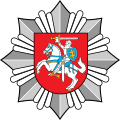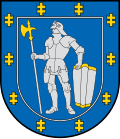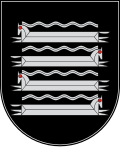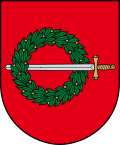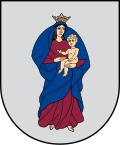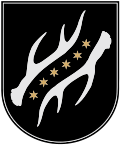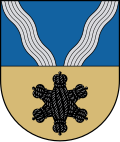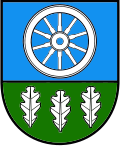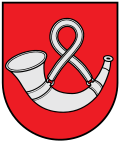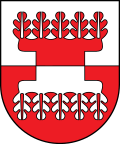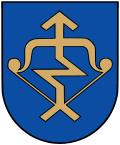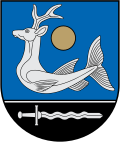The National coat of arms of Lithuania is a mounted armoured knight holding a sword and shield, known as Vytis (pronounced ['vîːtɪs] ). Since the early 15th century, it has been Lithuania's official coat of arms and is one of the oldest European coats of arms. The coat of arms features a red field with a white (silver) armoured knight on a white (silver) horse holding in his right hand a white (silver) sword above his head. [1]
Contents
- National
- Military
- Lithuanian Land Forces
- Lithuanian Naval Forces
- Lithuanian Air Forces
- Lithuanian Special Operations Forces
- Lithuanian Riflemen's Union
- Public Security Service of Lithuania
- Lithuanian State Border Guard Service
- Cultural regions
- Counties
- Alytus County
- Kaunas County
- Klaipėda County
- Marijampolė County
- Panevėžys County
- Šiauliai County
- Tauragė County
- Telšiai County
- Utena County
- Vilnius County
- Historical
- See also
- References
The present coats of arms of Lithuania are authorized by the President of Lithuania with suggestions by Lithuanian Heraldry Commission (Lietuvos heraldikos komisija), a heraldic authority appointed by presidential decrees. The Lithuanian Heraldry Commission also established regulations on Lithuanian coats of arms. [2]
This is a list of current coat of arms of Lithuania, it's military, government, cultural regions, counties, municipalities, cities, towns and historical coats of arms.





